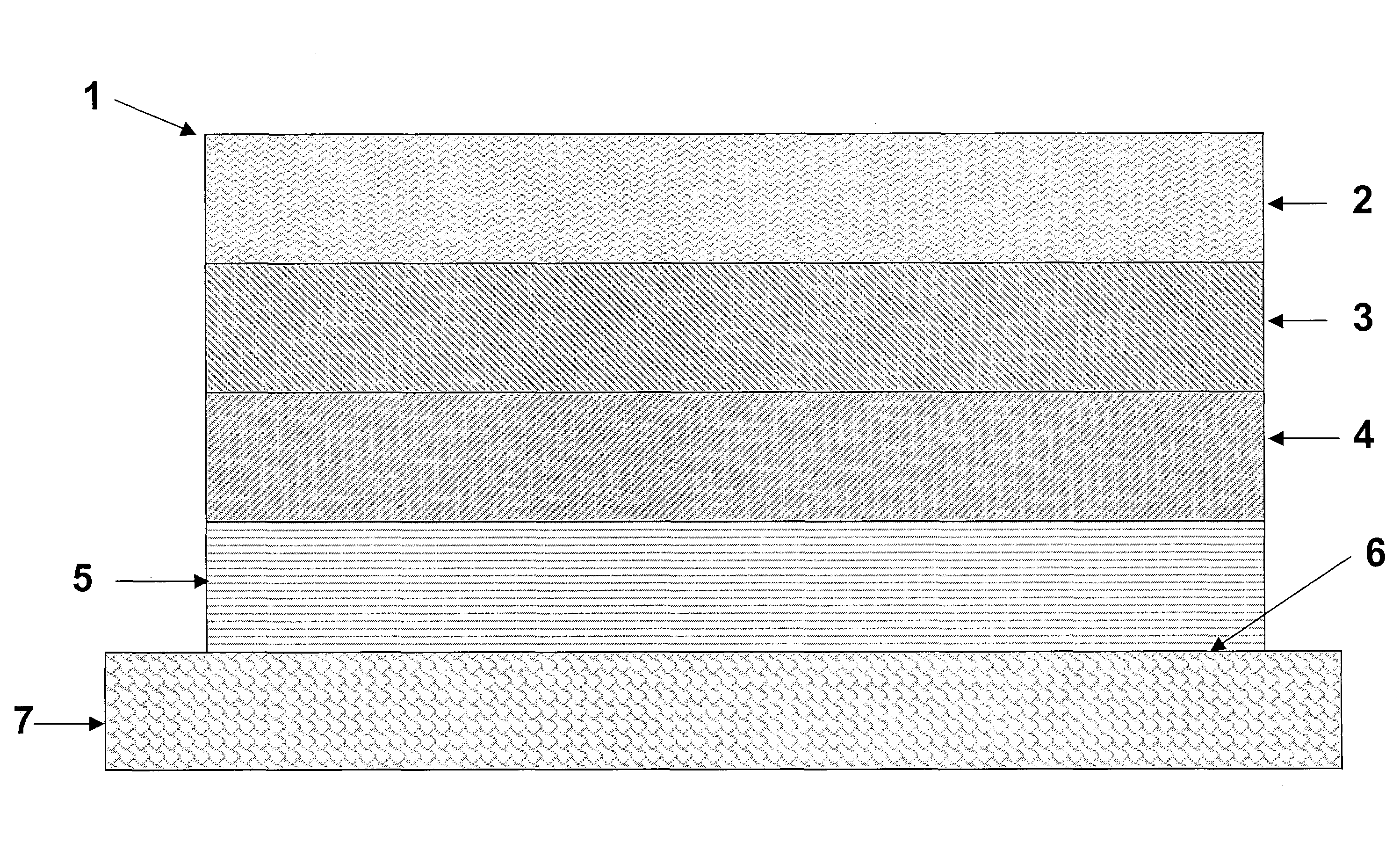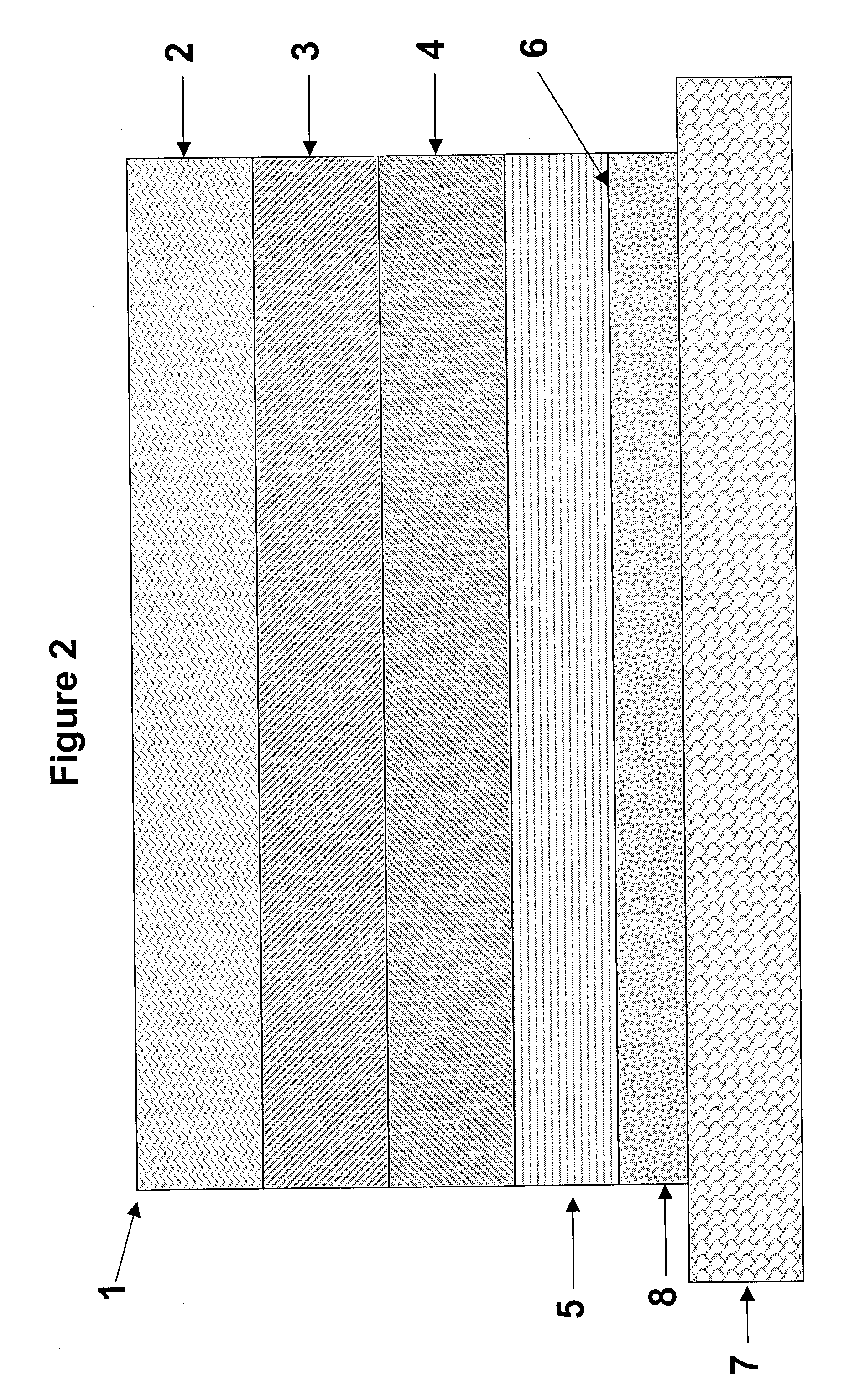Transdermal analgesic systems with reduced abuse potential
a technology of transdermal analgesic and abuse potential, which is applied in the direction of bandages, anti-inflammatory agents, drug compositions, etc., can solve the problems of adverse physical, dosage forms that do not provide for the controlled release of antagonists, and are not entirely satisfactory for reducing abuse potential, so as to reduce the potential for abuse, minimize/negligible skin sensitization response, and reduce the effect of abuse potential
- Summary
- Abstract
- Description
- Claims
- Application Information
AI Technical Summary
Benefits of technology
Problems solved by technology
Method used
Image
Examples
example 1
[0118]Monolithic transdermal analgesic reservoirs according to FIG. 1 were prepared containing 1.5 mg / cm2 of fentanyl base. A polacrylate adhesive (National Starch 87-2287, 100 g) was solubilized in a solvent (ethyl acetate, 128 ml). Fentanyl base was added to the polacrylate adhesive solution in amounts sufficient to generate a mixture containing 4 wt % of fentanyl in the adhesive solution and stirred to dissolve the analgesic. The solution was cast on to a peelable protective liner such as a siliconized polyester film, and the solvent was evaporated to provide a 0.05 mm (2 mil) thick reservoir layer.
[0119]Similarly, monolithic transdermal analgesic reservoirs were prepared using the polacrylate adhesive (National Starch 87-4287, 100 g), as described above.
example 2
[0120]Monolithic transdermal analgesic reservoirs were prepared as described in Example 1 with the following exceptions. Materials were dry blended, in the absence of ethyl acetate, and extruded using a slot die followed by calendaring to an appropriate thickness.
example 3
[0121]Monolithic transdermal analgesic reservoirs according to FIG. 1 were prepared as follows. A polacrylate adhesive (National Starch 87-2287, 500 g) and glyceryl monolaurate (GML, 10 g) were dissolved in a solvent (ethyl acetate, 640 ml). Fentanyl base was added to the polacrylate adhesive solution in amounts sufficient to generate a mixture containing 4 wt % of fentanyl in the adhesive solution and stirred to dissolve the analgesic. The solution was cast on to a peelable protective liner such as a siliconized polyester film and the solvent was evaporated to provide a 0.045 mm (1.8 mil) thick reservoir layer. The analgesic transdermal systems contained 0.35 mg / cm2 of fentanyl base.
[0122]Similarly, monolithic transdermal analgesic reservoirs are prepared using the polacrylate adhesive (National Starch 87-4287,100 g), as described above.
PUM
 Login to View More
Login to View More Abstract
Description
Claims
Application Information
 Login to View More
Login to View More - R&D
- Intellectual Property
- Life Sciences
- Materials
- Tech Scout
- Unparalleled Data Quality
- Higher Quality Content
- 60% Fewer Hallucinations
Browse by: Latest US Patents, China's latest patents, Technical Efficacy Thesaurus, Application Domain, Technology Topic, Popular Technical Reports.
© 2025 PatSnap. All rights reserved.Legal|Privacy policy|Modern Slavery Act Transparency Statement|Sitemap|About US| Contact US: help@patsnap.com



